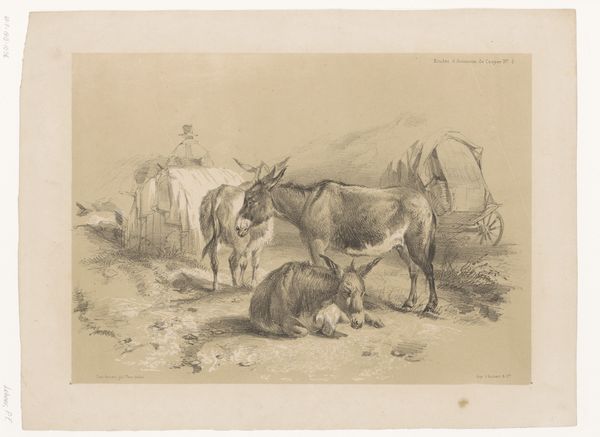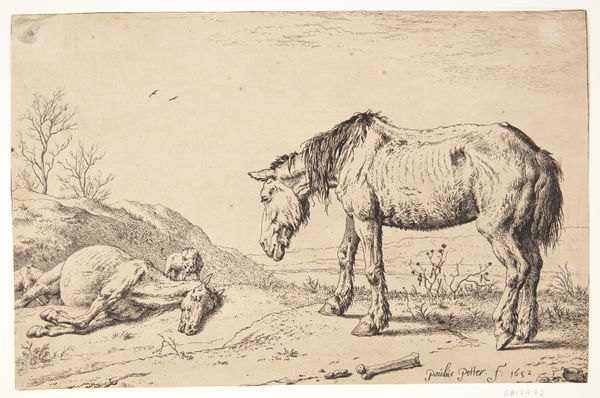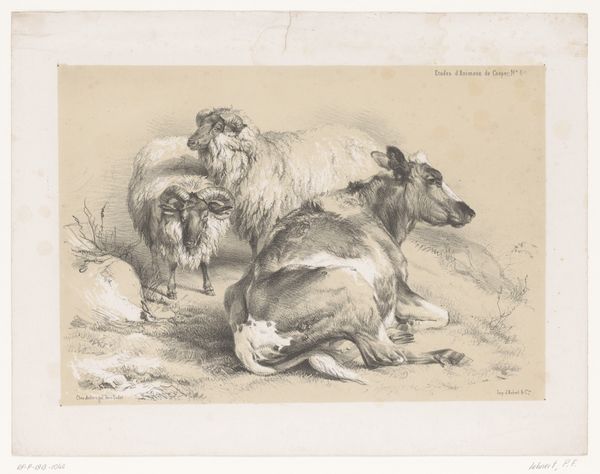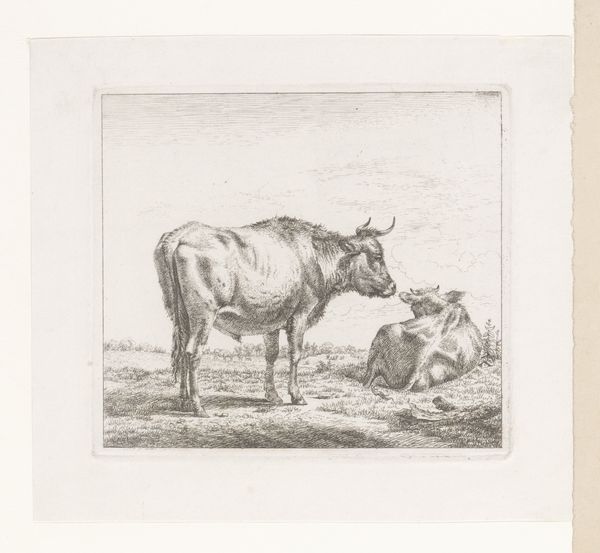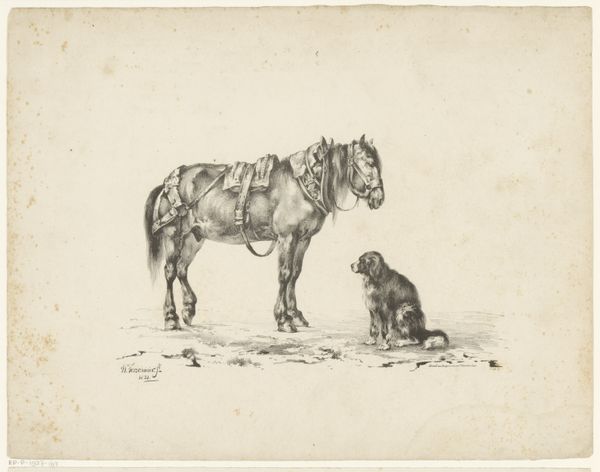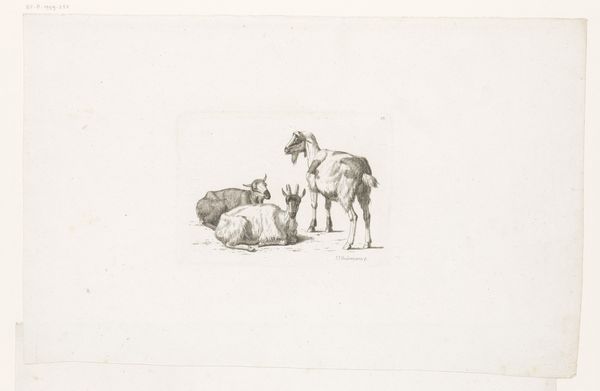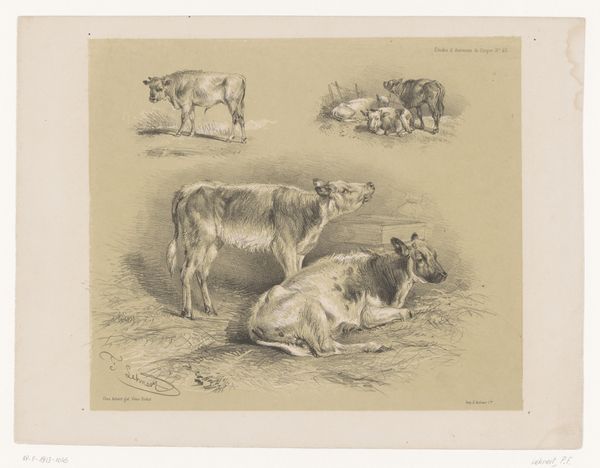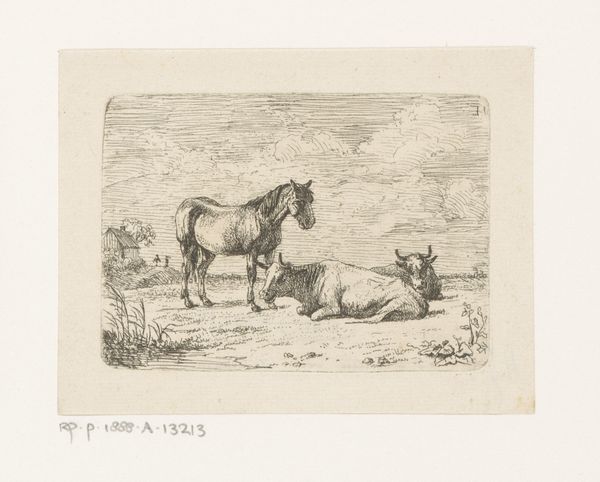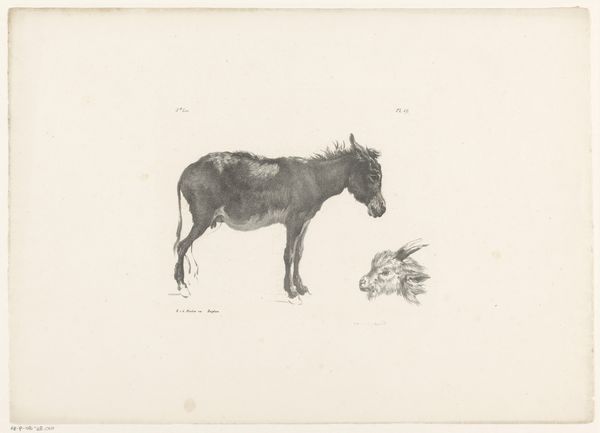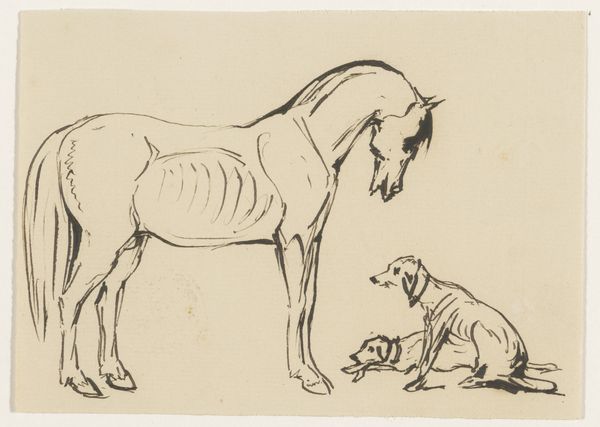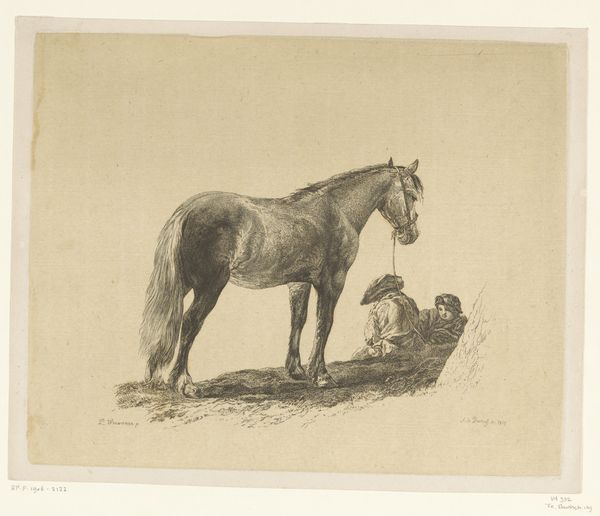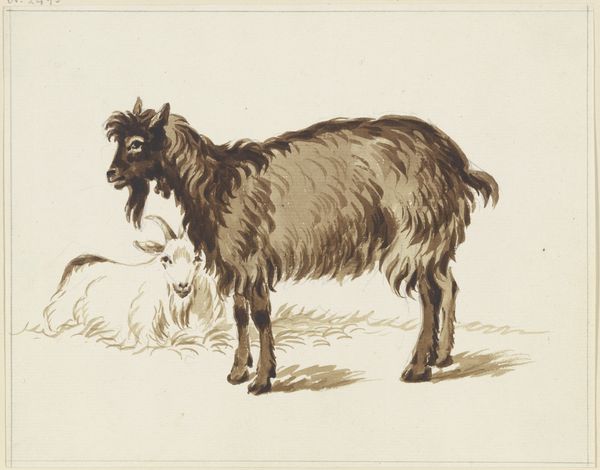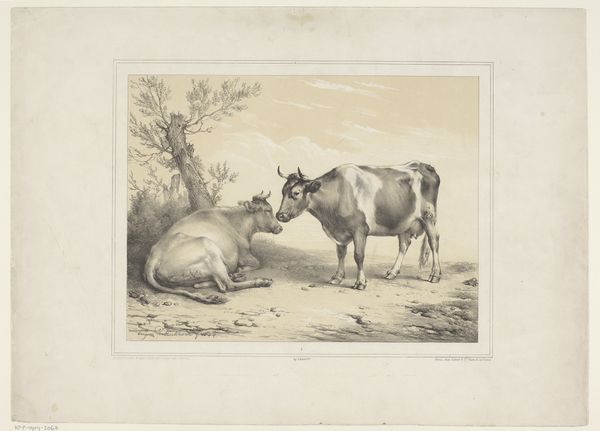
drawing, pencil
#
drawing
#
animal
#
pencil sketch
#
landscape
#
pencil
#
realism
Dimensions: height 275 mm, width 360 mm
Copyright: Rijks Museum: Open Domain
Pierre Frédéric Lehnert made this print of two donkeys in the 19th century, using lithography. It’s interesting to see the kind of animal that artists choose to represent and what meaning that might hold. These are working animals, beasts of burden. They also have a reputation for being stubborn. In nineteenth-century Europe, the donkey was a symbol of the working class and the rural poor. Honoré Daumier, for instance, used the image of the donkey in many satirical prints, contrasting them with the pretensions of the bourgeoisie. In this image, however, the animals seem to be resting. What does it mean to see an image of labor at rest? Is the artist simply showing us an everyday scene, or does it reflect a deeper interest in the lives of the working class? Looking closely at the history of 19th-century France and the development of printmaking, we can start to understand the significance of this humble image.
Comments
No comments
Be the first to comment and join the conversation on the ultimate creative platform.
